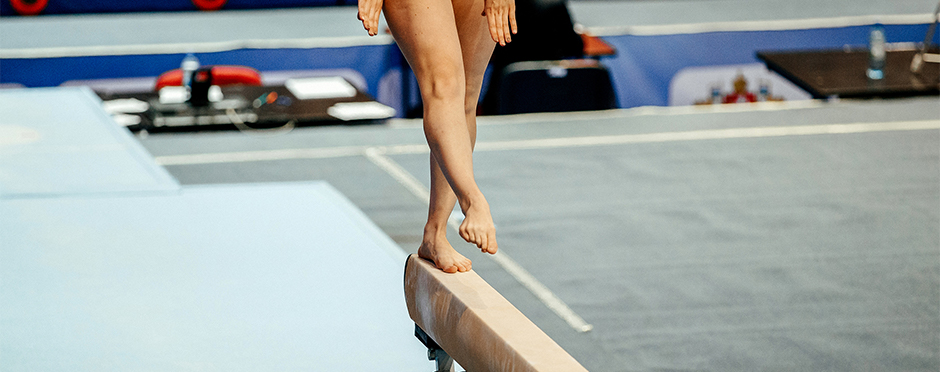
Ankle Strengthening for Tumbling Athletes
Leave a CommentGymnasts and cheerleaders are two types of athletes whose sports require tumbling. Tumbling can range from cartwheels to more complex flips and twists. Regardless of the difficulty of the tumbling, strong ankles for pushing off and landing are important. Weakness in ankles can result in injury such as an ankle sprain, ankle fracture, or tendinitis in muscles surrounding the ankle.
Tumbling puts more than just body weight on their joints; estimates vary but can be as high as 14 times the body weight for landing after a double back. Due to these high forces, the ankles can be at risk of injury such as ankle sprain, foot fracture or ankle fracture. To decrease the risk of injury during tumbling, ankle strengthening exercises should be performed.
Brace Use for Ankles
It is common to see various ankle braces when watching gymnastics or cheerleading. Most ankle braces offer some compression, and may also have laces or Velcro straps to offer additional support. Many ankle braces will limit the amount of movement available for the ankle. Prolonged use of a brace can affect the proprioception of the ankle; proprioception helps us know what position our body is in and the type of surface we are standing on. Tumbling athletes need good proprioception in their ankles to decrease their risk of injury. While ankle braces can help provide support to the ankle, they are not a replacement for a good strengthening program.
Ankle Strengthening Exercises
- Heel Raises: Stand with your feet underneath you and rise onto your toes, lifting your heels off the ground. Try to ensure equal weight between your big toe and little toe to prevent your ankles from falling in or rolling out.
Tip: Once heel raises become easy, you can challenge yourself to perform on one leg at a time or perform on the edge of the tumbling floor to drop past neutral.
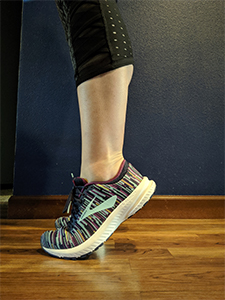
- Ankle strengthening with TheraBand: Use of TheraBand is common for many athletes. For the ankle, it is important to strengthen in all four directions the ankle can move: up, down, in and out. TheraBand comes in different levels of resistance, so make sure to select the appropriate difficulty. It is also better to perform these strengthening exercises with control instead of speed. Try to perform 20-30 reps in each direction.
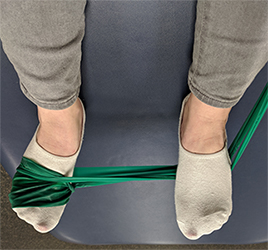
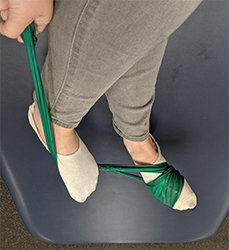
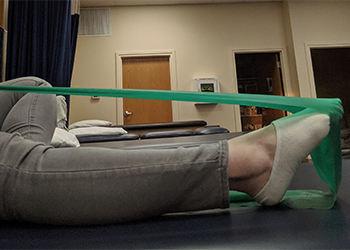
Balance And Proprioception Exercises
- Tandem Balance: stand with one foot in front of the other, heel-to-toe as if on a balance beam, and balance for one minute. Perform on both sides. Try to balance on your toes in relevé once this is easy.
Tip: You can make this harder by closing your eyes or by standing on a soft or squishy surface.
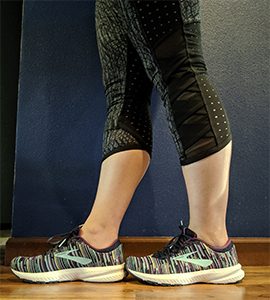
- Single Leg Balance: Balance on one leg and try to hold for one minute on each side. Once this is mastered, perform on a soft surface or with eyes closed.
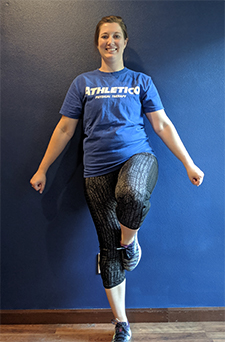
Tip 1: For an added challenge try standing in passé, arabesque, or lib position and hold for one minute. You can also attempt with eyes closed or on a soft surface.
Tip 2: You can make single leg balance harder by adding movement. Try standing on one leg while reaching toward the floor for 10 reps without losing your balance. You can use a water bottle as a target. You can also try to add leg swings while balancing.
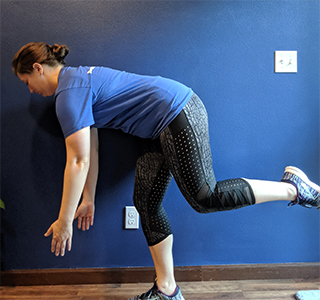
Jumping & Landing
Tumbling requires strong ankles for both push off and landing after jumping. Therefore proper mechanics during both takeoff and landing will help prevent injury. A proper landing position should be feet shoulder width apart with knees over your second toe and a slight bend in the knees. You should roll through your foot when landing, with the ball of your foot landing first and the heel coming down next.
- Star Hops: Stand on one leg and practice hopping forward and sideways as if tracing a star on the floor (you can also tape a star on the floor to make it easier to follow). Perform on both the right and left foot and going different directions.
Seek Treatment at the First Sign of Injury
Although the aforementioned exercises can help strengthen your ankles to minimize your risk of injury, it is important to pay attention to your body and seek treatment should pain or injury occur. If you feel you may have an ankle injury, contact your nearest Athletico clinic for a free assessment.
The Athletico blog is an educational resource written by Athletico employees. Athletico bloggers are licensed professionals who abide by the code of ethics outlined by their respective professional associations. The content published in blog posts represents the opinion of the individual author based on their expertise and experience. The content provided in this blog is for informational purposes only, does not constitute medical advice and should not be relied on for making personal health decisions.
References:
1. Seegmiller, Jeff & Mccaw, Steven. (2004). Ground Reaction Forces Among Gymnasts and Recreational Athletes in Drop Landings. Journal of athletic training. 38. 311-314.
